In this Article
The sun is shining, bees are happily buzzing, and cheerful flowers of all shapes and sizes dance in the breeze. Fresh swaying fruit, vigorous vegetables, and aromatic herbs also join the harmonious symphony. Such gardens are a delight to the senses and provide so much joy in the kitchen, too. Ever wonder how people do it? How they create a veritable oasis of serenity in the middle of a bustling town?
In nature, various plants share similar growing conditions and often form synergistic bonds to improve their chances of mutual survival. As such, certain plants like to grow near each other and have better growth outcomes when allowed to do so.
As growers, it benefits us to try and replicate these conditions within our own home gardens. In the gardening community, we call this companion planting, and it is what lays the foundation for a beautiful and thriving garden. Let’s learn more about it, shall we?
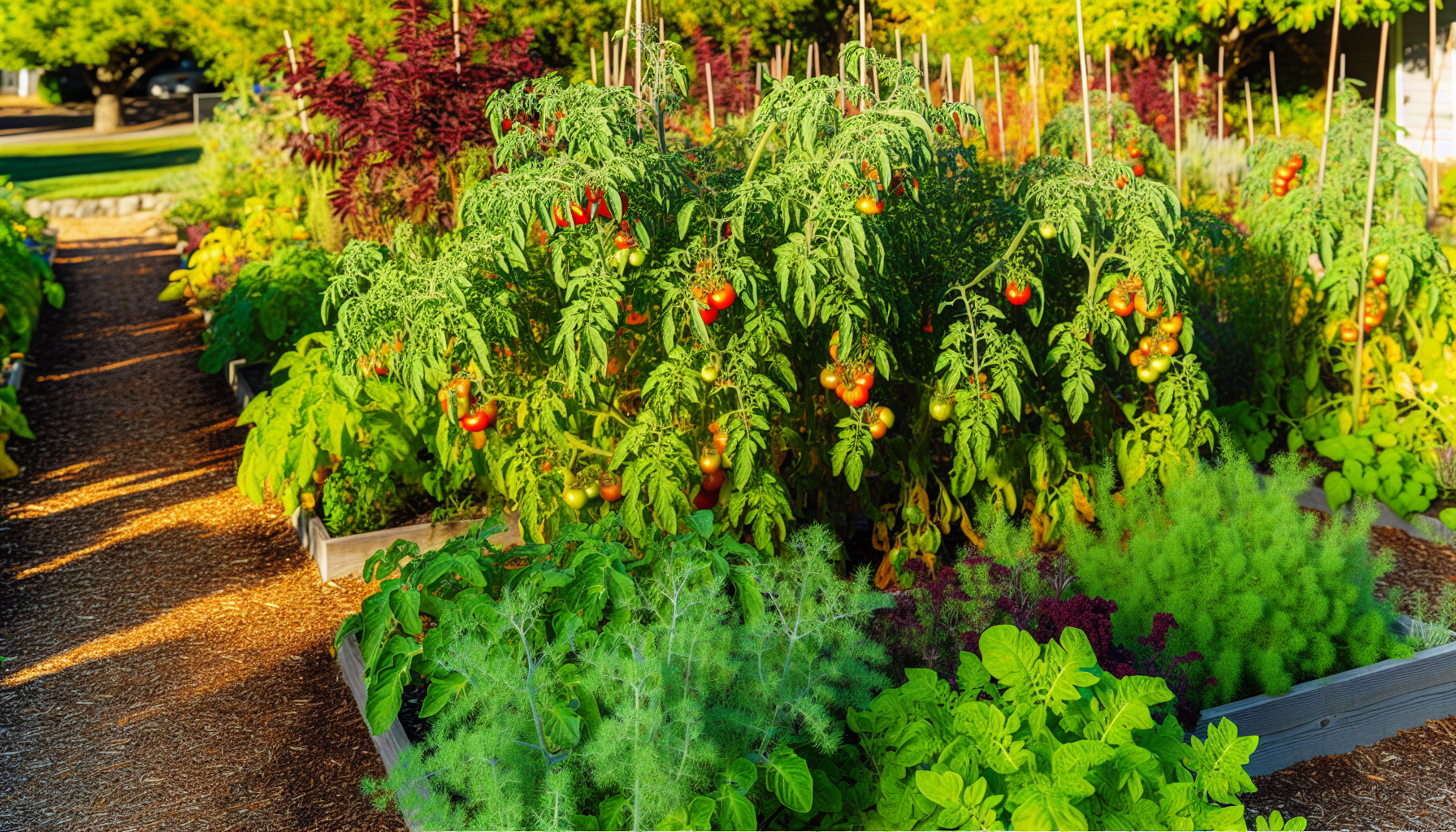
Companion planting is a method used by savvy gardeners to increase the health of their plants by planting them near other plants that benefit them. Essentially, some plants compete for nutrients and space, while other plants enjoy helping each other succeed. So as growers, we pair plants together based upon how well they play and grow together. Similarly, we avoid placing plants near one another if they are antagonistic to one another.
The practice of companion planting can make nutrients within the soil more bioavailable, increase yields, repel opportunistic pests naturally, and often encourages beneficial pollinators or valuable insect predators to visit the garden. Companion planting is also aesthetically pleasing, optimises space, and makes for a more attractively diverse garden.
For instance, one of the most famous examples of companion planting is “The Three Sisters”. Across the pond, Native Americans realised that growing beans, squash, and corn (maize) together benefited the plants and ensured a more reliable harvest.
Here’s how it works: as the corn grows tall, it provides a support structure for the beans to grow on. The beans return the favour by fixing nitrogen in the soil and stabilising the towering stalks of corn. Lastly, the large leaves of the squash grow low to the ground and act as a ground cover. As such, squash helps block weeds and facilitates the retention of soil moisture.
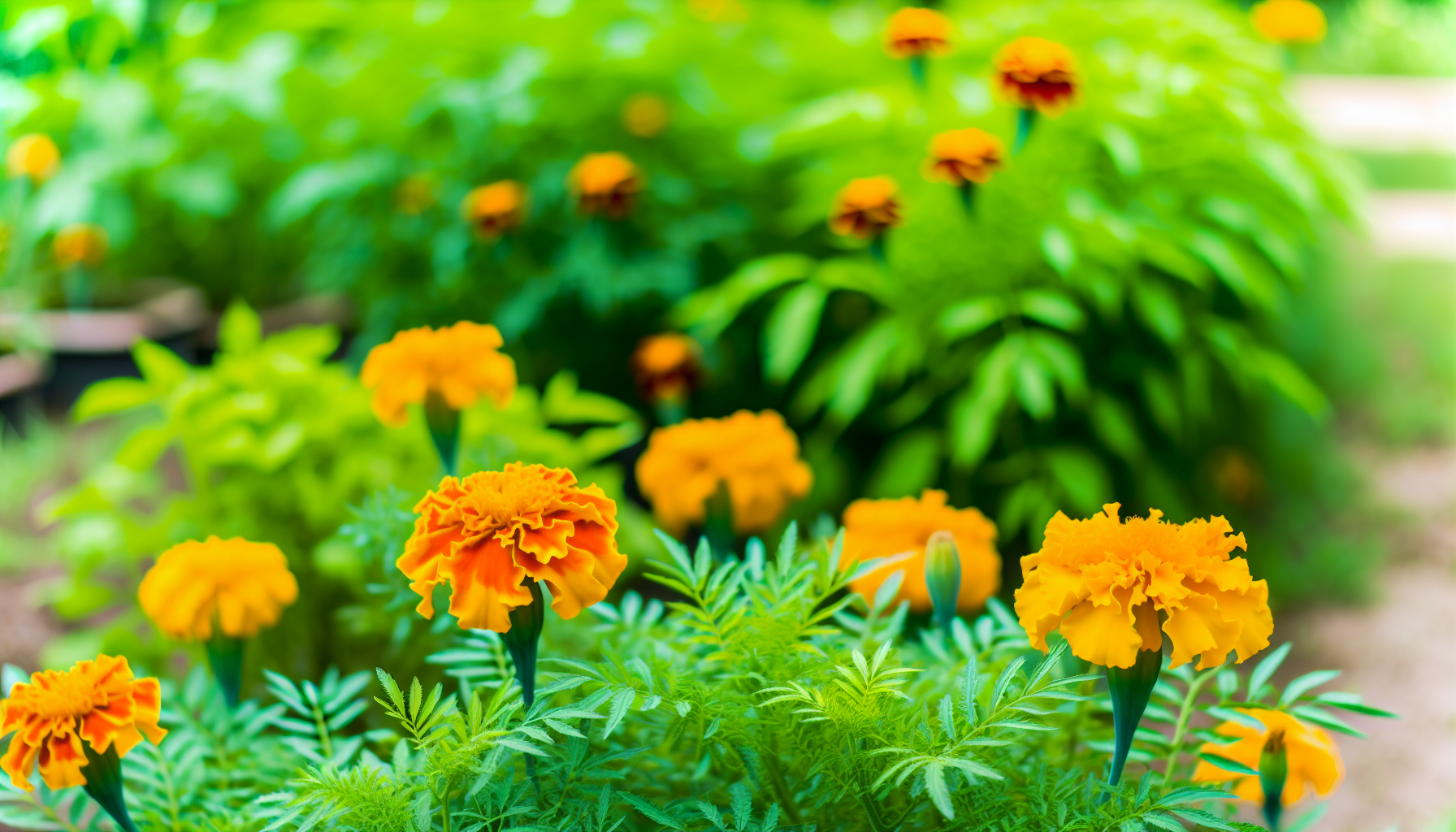
Some of the Best Companion Plants for Tomatoes
Tomatoes too, have a whole host of plant companions. Here are just a few that you can add to your lovely home garden to increase overall vitality and improve fruiting.
Basil
Ocimum basilicum
Type: Annual Aromatic Herbaceous Bush
How Basil Benefits Tomatoes: The basil plant benefits your tomato crop by helping to expand and support the size of root systems. It also facilitates improved fruiting. Basil has a pleasantly big presence in the garden. Just touching it releases a powerful scent that repels pests like hornworms, spider mites, thrips, mosquitoes, whiteflies, and aphids. Essentially, the strong smell of the basil plant enables your tomato plants to enter into “disguise mode” in the garden, so pests can’t find them.
Growth Habit: Basil has a dense habit of growth and comes in numerous colours, shapes, and sizes. Like their tomato friends, there are so many amazing varieties of basil to choose from. In fact, it’s a good idea to grow a plethora of various kinds, as each has their own unique properties.
UK Climate: Basil likes a very warm environment and may do best in a greenhouse. Therefore, if you are growing tomatoes in a greenhouse this year, basil is definitely a good candidate as their plant companion. If planting outside, be sure to place your basil plants in a sheltered spot with plenty of full sun.
Edible Parts: The addictively fragrant leaves and flowers of the basil plant go great in nearly any dish. Basil pairs especially well with soft cheeses, tomatoes, fruit, sandwiches, soup, and salsa.
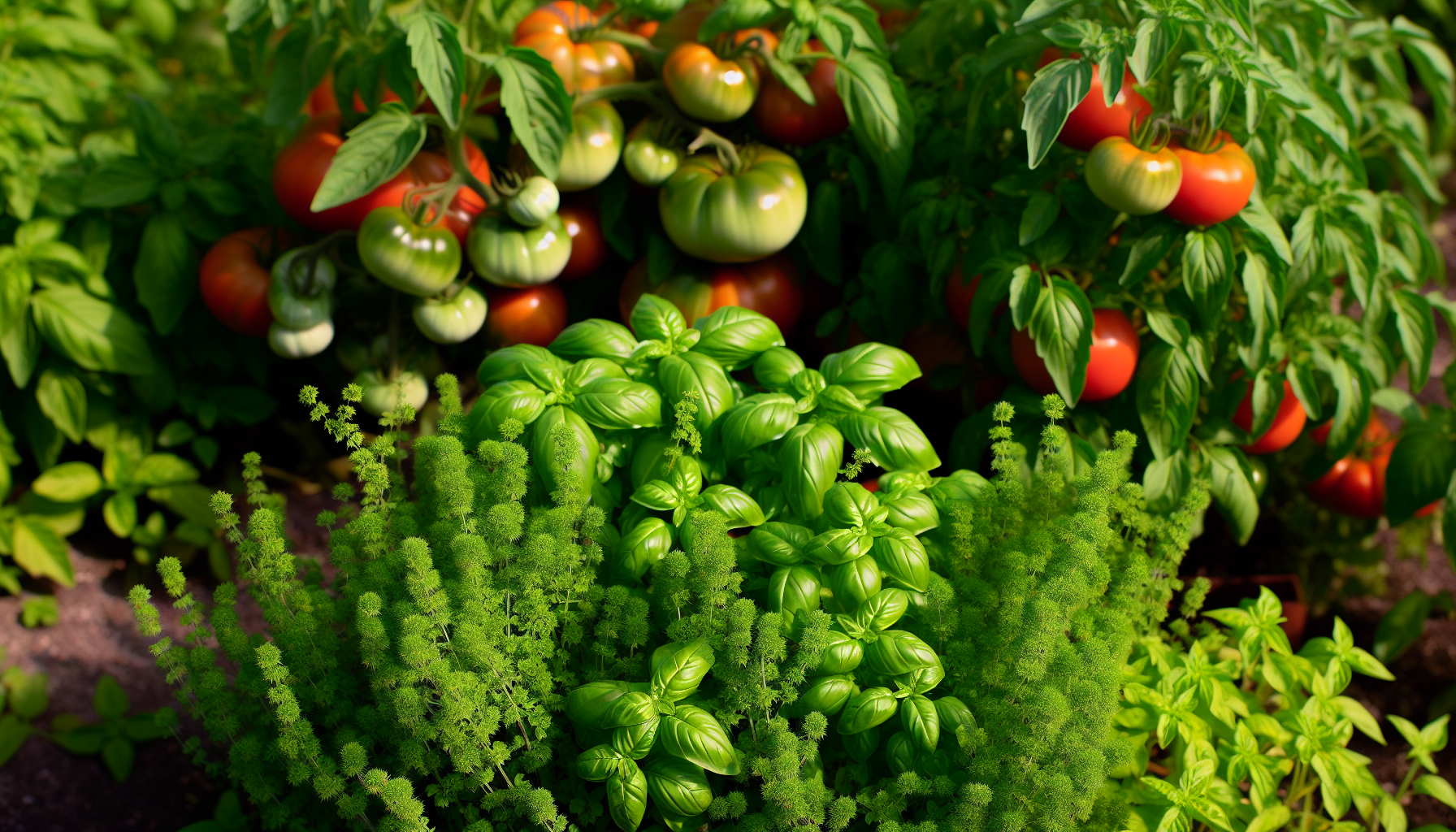
Borage (Starflower)
Borago officinalis
Type: Annual Herbaceous Flowering Bush
How Borage Benefits Tomatoes: Borage improves soil quality by adding essential minerals, vitamins, and nutrients. Borage also repels pests like hornworms and cabbage root flies while simultaneously attracting bees.
Growth Habit: Deadheading its attractive blue flowers will encourage continuous growth throughout the season. Borage tolerates most any soil and can grow nearly anywhere. It also, like tomatoes, needs full sun to thrive. Some varieties (officinalis ‘Variegata’) come with variegated leaves and are even more stunning to look at.
UK Climate: It grows very well here in the UK.
Edible Parts: The young leaves and prolific blue flowers are edible. Borage tastes a lot like cucumber and makes a great addition to salads and sandwiches. Borage also has an array of medicinal properties. It is said to help with stomach, heart, and respiratory health. Many people brew the flowers of borage to make an attractive blue tea. Best of all, borage enhances the flavour of your tomatoes as they ripen. Delicious!
Calendula (Pot Marigold/English Marigold)
Type: Flowering Aromatic Herb
How Calendula Benefits Tomatoes: Visually, these bright orange flowers have a glorious presence in the garden and attract beneficial pollinators. The potent aroma of the calendula plant repels common pests like hornworms, aphids, nematodes, corn earworms, thrips, flea beetles, slugs, and rabbits.
Growth Habit: Daisy-like flowers grow prolifically from moderately sprawling low bushes, about 30 to 60cm (1 to 2 feet tall). This plant makes a great low hedge in the garden. Plant calendula between tomato plants or as a border for improved protection.
UK Climate: Calendula grows very well in the UK.
Edible Parts: The yellowy-orange flowers of calendula are edible and go nicely in salads.
French/African Marigold
Tagetes patula / Tagetes erecta
Type: Annual Herbaceous Flowering Bushes
How Marigolds Benefit Tomatoes: Place marigolds around your tomato bushes to repel tomato aphids, nematodes, and hornworms. Marigold is said to increase the yield of tomato plants by as much as 50%!
Growth Habit: The marigold plant grows in compact low bushes with a proliferation of bright orange or yellow flowers. They do well directly in the ground or in large patio pots. Like tomatoes, they enjoy full sun with loamy moist soil that is well-draining.
UK Climate: African marigolds grow exceptionally well in the UK and will bring cheerful colour to your garden.
Edible Parts: The peppery orange or yellow flowers of marigold are edible and make a delightful addition to salads.
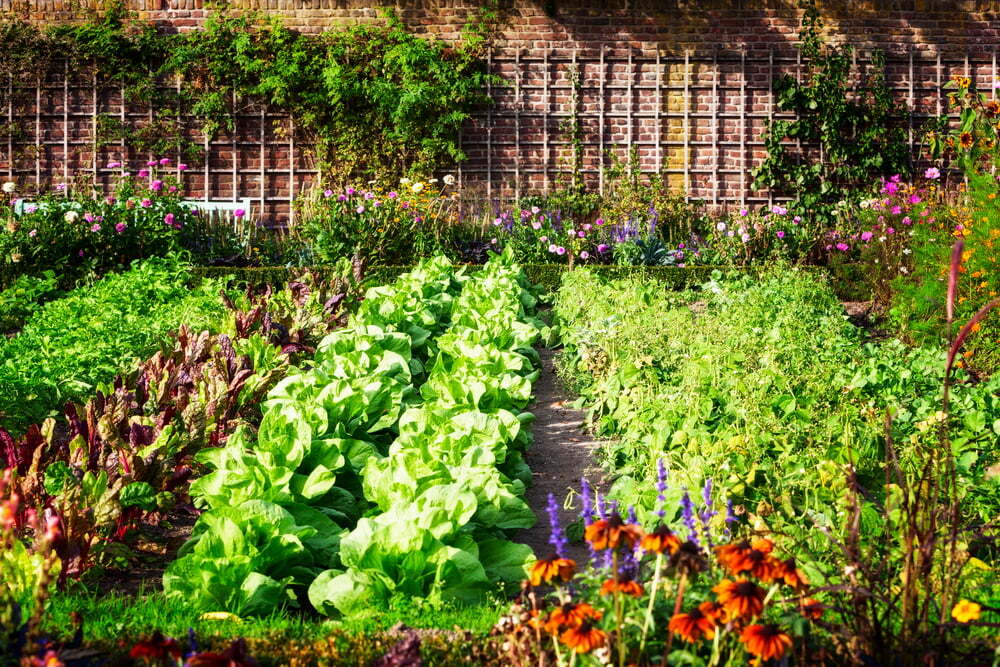
Chives
Allium schoenoprasum
Type: Perennial Flowering Herb
How Chives Benefit Tomatoes: Chives are a wonderful companion plant to tomatoes. These tasty plants help repel nematodes, spider mites, and aphids. Additionally, when they set their purple flowers, they help attract beneficial pollinators like bees, butterflies, and wasps.
Growth Habit: Chives have a clumping spread with bright green tubular stalks which shoot from the ground and stand vertically. During the flowering phase, purple pom-pom shaped blooms burst from the shoots and tower above the rest of the foliage. These purple flowers are a lovely sight as they sway in the wind.
UK Climate: Chives are a cherished herb within British kitchens, and they grow very well here.
Edible Parts: The stems, bulb roots, and purple flowers are edible. Chives go great in salads, sauces, pesto, salsa, and soup.
Garlic
Allium sativum
Type: Herbaceous Root Vegetable
How Garlic Benefits Tomatoes: Garlic has a singularly pungent aroma that most of us are familiar with. Put simply, pests don’t like the smell of garlic and it is toxic to many of them. Garlic repels moths, cabbage loopers, and cabbage root larvae and flies. Also important, garlic has antiviral and antifungal properties that neutralise pathogens in the soil.
Growth Habit: Aromatic bulbs grow underground and issue forth stocky and reaching stems with long linear leaves.
UK Climate: Garlic grows very well here in the UK.
Edible Parts: All parts of the garlic plant (including flowers) are edible, medicinal, and delicious!
English Lavender (True Lavender)
Lavandula angustifolia
Type: Flowering Aromatic Herb
How Lavender Benefits Tomatoes: The fragrant lavender plant draws beneficial pollinators like bumble bees while also repelling pests like nematodes and flea beetles. To place them alongside your tomato plants, grow them in their own pots as they need sandy, somewhat dry soil.
Growth Habit: Lavender has a bushy habit of growth, with tall bluish-purple flowers that stand tall above its lower foliage. Deadheading spent flowers will encourage new growth throughout the season. Use the fresh flowers right away or save and dry them for later use.
UK Climate: Lavender is a cherished, beloved, and well-established resident of the UK.
Edible Parts: Lavender flowers are often utilised for their enchanting fragrance and purple-blue colour. They are also used medicinally in topical formulations. If you do venture to eat the flowers or leaves, only use a cultivar of English lavender (Lavandula angustifolia), as opposed to French lavender (Lavandula stoechas) which is not eaten. English lavender does have a strong taste and a little bit goes a long way when adding it to baked goods. The flowers of French lavender can be added to soaps, candles, and numerous homemade cosmetics. Really, it’s best to have both varieties in the garden.
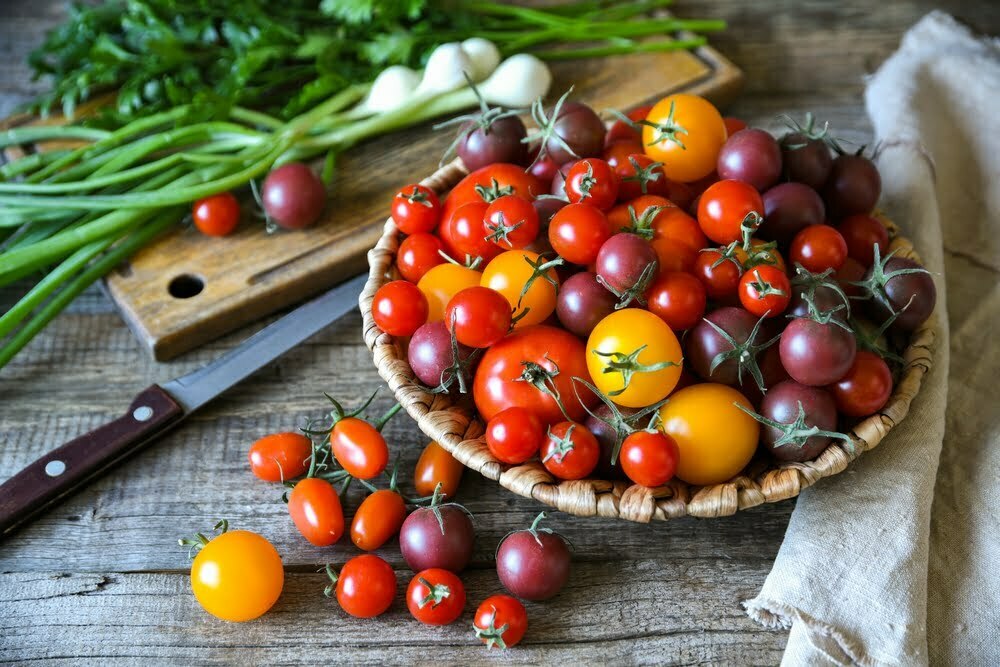
Nasturtiums (Indian Cress)
Tropaeolum majus
Type: Annual Herbaceous Flower
How Nasturtiums Benefit Tomatoes: These orange beauties help out our tomato friends by drawing pests like whiteflies, squash bugs, and aphids away from them. Simultaneously, they attract beneficial pollinators and aphid predators like hoverflies. For this reason, plant them a little ways away from your tomato plants, so they can lure pests away from your tomatoes and toward themselves.
Growth Habit: These cheerful flowers grow close to the ground in mounds and make a good groundcover. Like tomatoes, nasturtiums desire full sun and well-draining soil.
UK Climate: Nasturtiums are a popular main staple here in the UK.
Edible Parts: The delightfully peppery round leaves, seed pods, and bright orange flowers of the nasturtium plant are edible. Add them to salads or eat them on their own.
Radishes
Raphanus sativus
Type: Annual Root Vegetable
How Radishes Benefit Tomatoes: These tasty root veggies help trap flea beetles and help prevent them from defoliating tomato leaves. Plant them a little ways away from your tomatoes, so they can draw away pests. We have a few different species of flea beetle here in the UK.
The only downside is that the radish crop may be lost due to the flea beetles attacking the radishes instead of your tomatoes. To mitigate this loss, consider planting some radishes on the other side of your garden as well. In this way, you’ll have radishes to eat and also other radishes that take the brunt of the pest attack.
Growth Habit: Radishes are a part of the Brassica family. They grow with dense upper foliage that springs from the top of a single large red root. They fit easily into tight spaces and are fast growers. Typically, they are ready for harvest after about 28 days or just before flowering.
UK Climate: Yes, they grow exceptionally well here in the UK. In fact, they are often one of the first salad crops to mature in British gardens and are usually available for harvest by the end of April.
Edible Parts: The crunchy red roots, delicate flowers, and lush green leaves of the radish plant are not only edible but offer a refreshing yet peppery-sweet taste. They are great with salads or eaten on their own.

Sage
Salvia officinalis
Type: Aromatic Perennial Herb
How Sage Benefits Tomatoes: Sage is one of those herbs that once you plant it in your garden, it faithfully comes back every spring with renewed fervour. Its strong, yet pleasant aroma protects your tomatoes by repelling flea beetles, spider mites, and slugs. Sage flowers also benefit your garden by attracting beneficial pollinators like bumble bees and butterflies.
Growth Habit: It should be noted that sage is a sun-loving drought-tolerant plant and likes drier soil than tomatoes. To gain the benefit of its potent aroma, grow your sage in large pots and place them strategically around your tomato plants.
UK Climate: Hardy varieties can grow well in the UK once established.
Edible Parts: The silvery leaves and blueish-purple flowers of the sage bush are not only edible but delicious too. Once you discover their savoury flavour, you’ll be hooked for life. Sage goes exceptionally well with poultry. It can be used in omelettes, soup, and takes roast chicken to a whole new level.
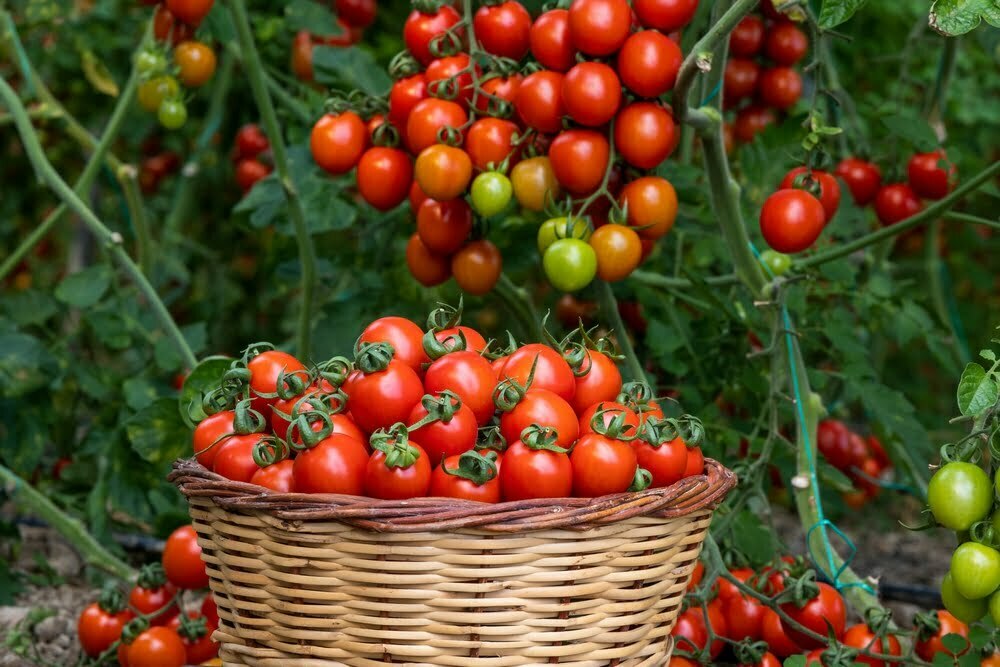
Conclusion
Companion plants provide formidable protection for your tomatoes by diverting or repelling pests, adding nutrients to the soil, and by appealing to native beneficial pollinators that often prey upon pests.
The great news is that if you are growing your own delicious tomatoes this year, you can too help the plants produce better by using some of the tomato companion plants that we mentioned above; from oregano to cilantro to asparagus, plus so many more. Therefore, be sure to look over our plant catalogue when planning your spring garden this year.

